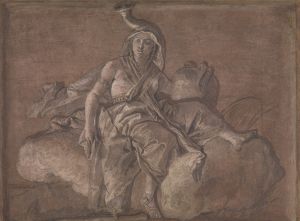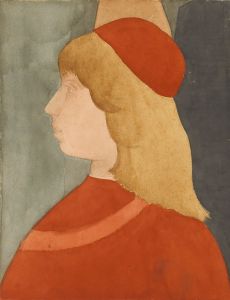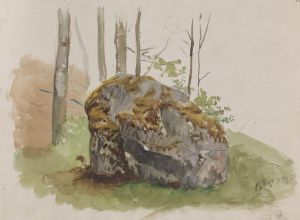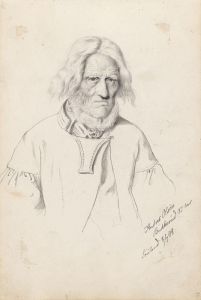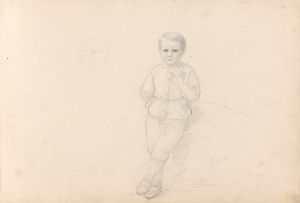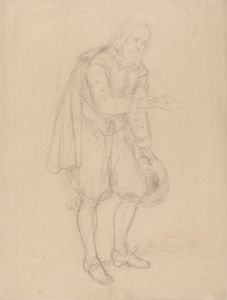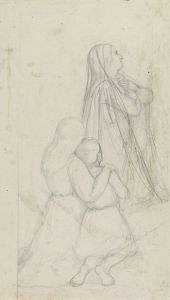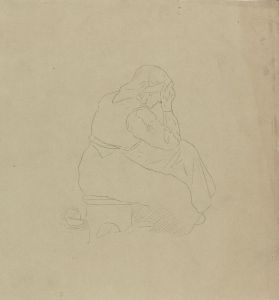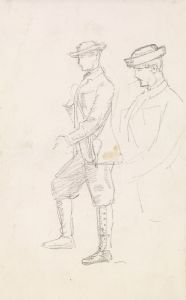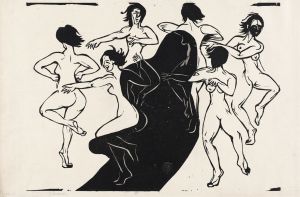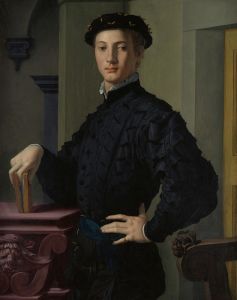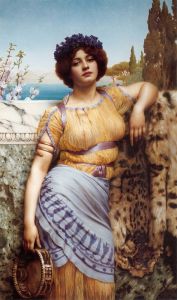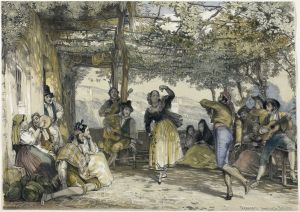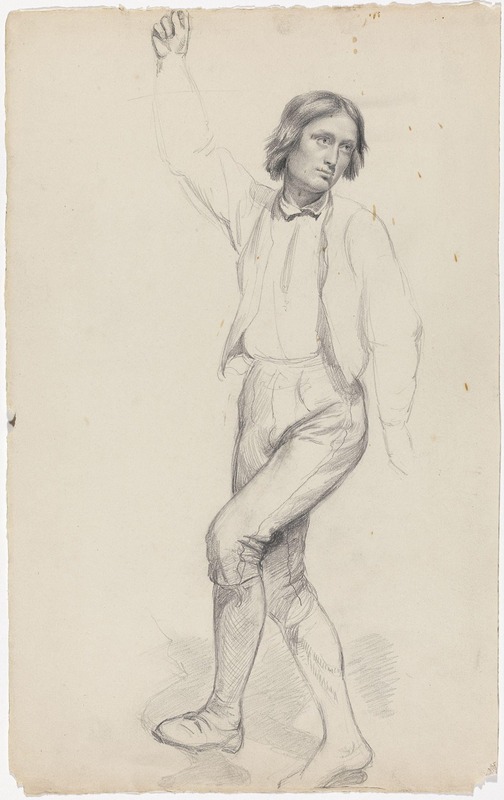
Dansende ung mann
A hand-painted replica of Adolph Tidemand’s masterpiece Dansende ung mann, meticulously crafted by professional artists to capture the true essence of the original. Each piece is created with museum-quality canvas and rare mineral pigments, carefully painted by experienced artists with delicate brushstrokes and rich, layered colors to perfectly recreate the texture of the original artwork. Unlike machine-printed reproductions, this hand-painted version brings the painting to life, infused with the artist’s emotions and skill in every stroke. Whether for personal collection or home decoration, it instantly elevates the artistic atmosphere of any space.
"Dansende ung mann" (Dancing Young Man) is a painting by the renowned Norwegian artist Adolph Tidemand. Created in 1848, this artwork is an exemplary piece of Tidemand's dedication to capturing Norwegian folk life and traditions. Adolph Tidemand, born on August 14, 1814, in Mandal, Norway, is celebrated for his detailed and vivid depictions of rural Norwegian culture, which played a significant role in the national romantic movement in Norway during the 19th century.
The painting "Dansende ung mann" portrays a young man dancing, likely participating in a traditional Norwegian folk dance. The scene is set in a rustic, rural environment, which is characteristic of Tidemand's work. His paintings often reflect the everyday lives, customs, and attire of Norwegian peasants, providing a valuable historical record of the period.
Tidemand's attention to detail is evident in the young man's traditional costume, which includes elements such as a vest, shirt, breeches, and possibly a hat, all typical of Norwegian folk dress of the time. The background of the painting, although not the central focus, complements the scene with elements that suggest a rural setting, such as wooden structures or natural landscapes.
Adolph Tidemand studied at the Academy of Fine Arts in Copenhagen and later in Düsseldorf, where he became associated with the Düsseldorf school of painting. This influence is visible in his meticulous approach to composition and his ability to convey the character and spirit of his subjects. Tidemand's works are known for their narrative quality, often telling a story or capturing a moment in time with great emotional depth.
"Dansende ung mann" is part of Tidemand's broader oeuvre that includes other notable works such as "Haugianerne" (The Haugeans) and "Brudeferden i Hardanger" (The Bridal Procession in Hardanger), the latter being a collaboration with fellow artist Hans Gude. These paintings collectively highlight Tidemand's role in documenting and romanticizing Norwegian rural life, contributing to a sense of national identity during a period when Norway was seeking to assert its cultural independence.
The painting is housed in the National Gallery of Norway, where it continues to be an important piece for both art historians and the general public. It serves as a testament to Tidemand's skill in capturing the essence of Norwegian folk culture and his contribution to the national romantic movement.
In summary, "Dansende ung mann" by Adolph Tidemand is a significant work that exemplifies the artist's dedication to portraying Norwegian folk traditions. Through his detailed and evocative style, Tidemand has provided a lasting visual record of 19th-century Norwegian rural life, making his work an invaluable part of Norway's cultural heritage.





